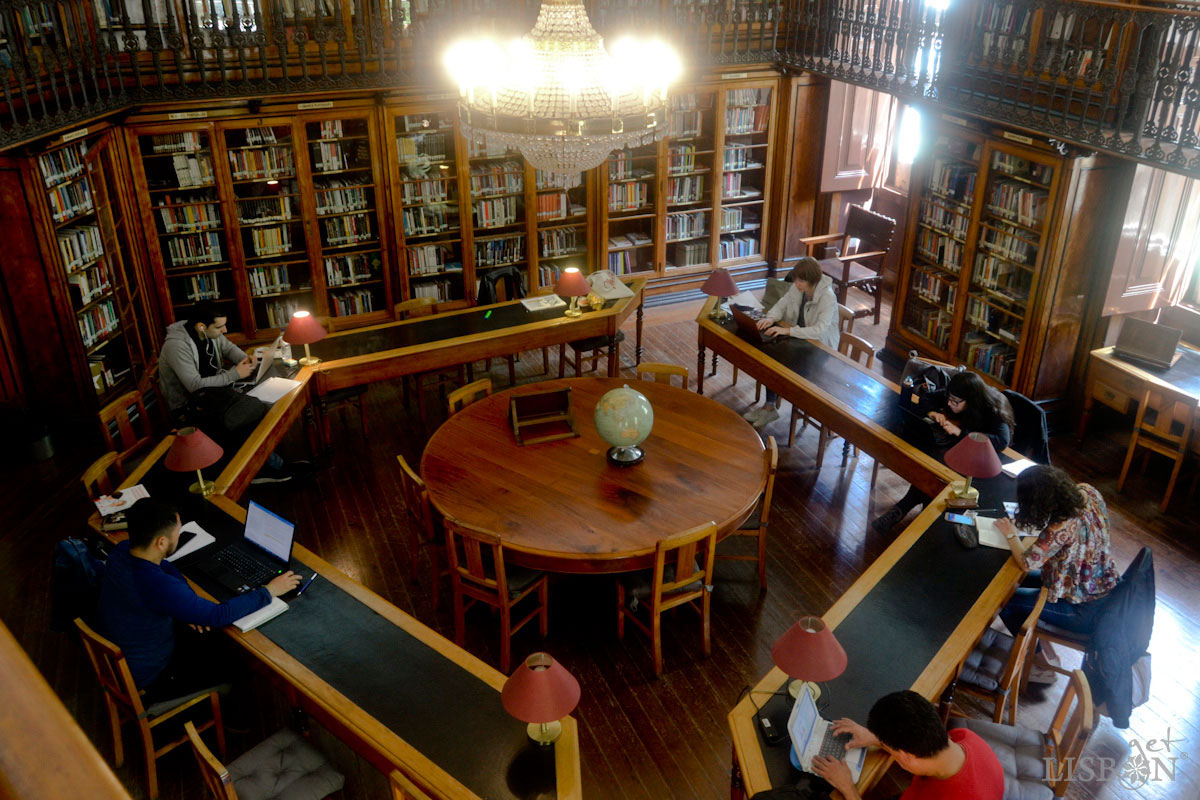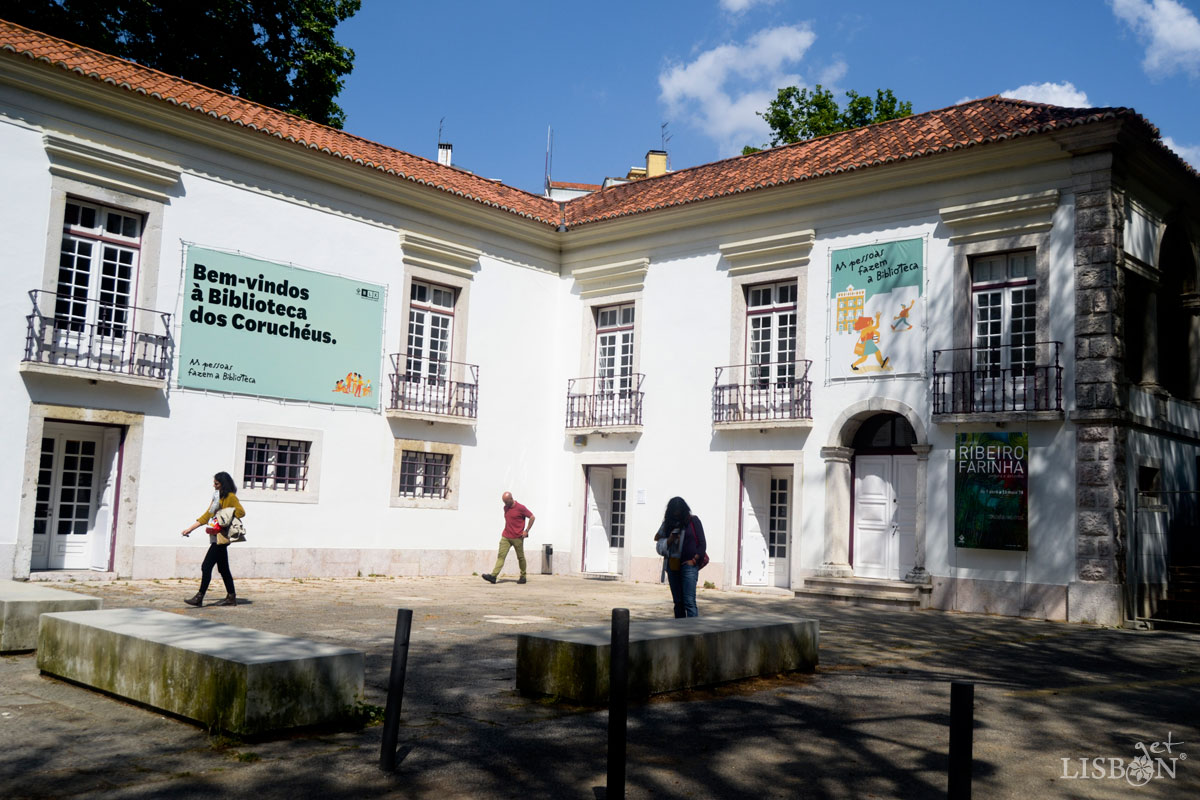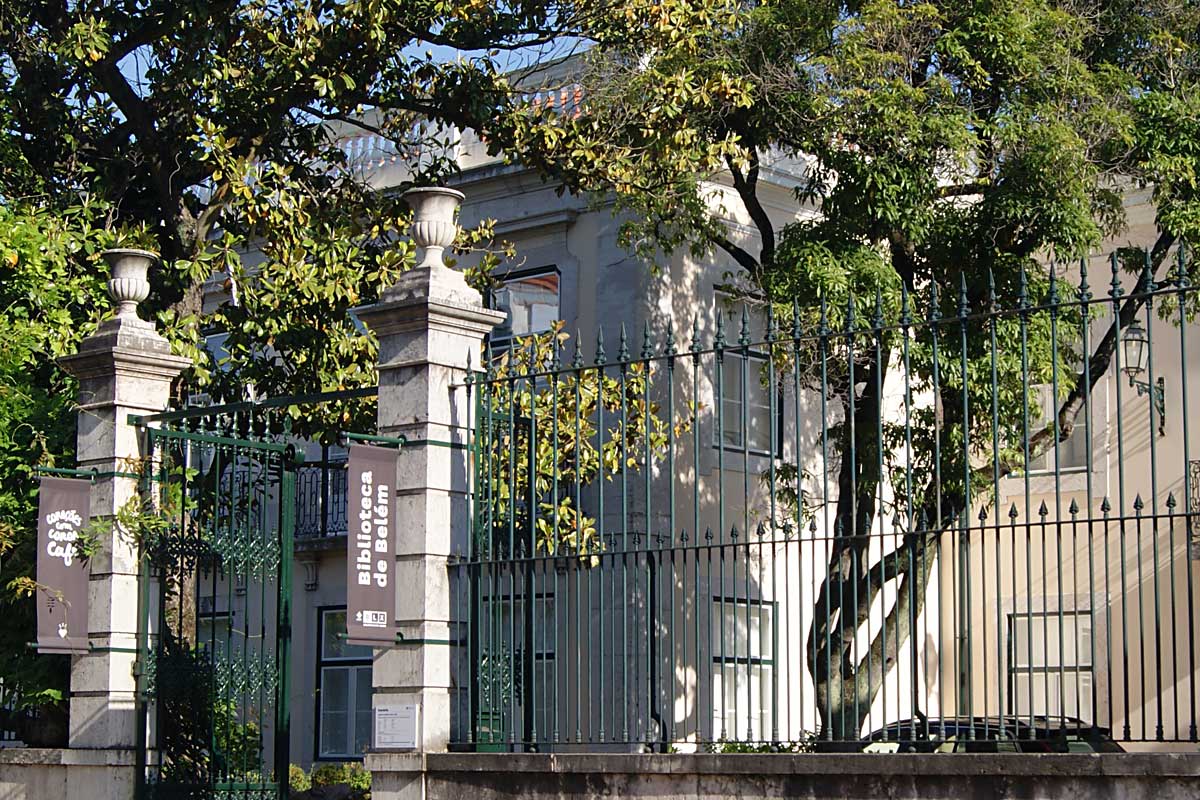Original article published on 30 May 2018
Today we highlight 5 Municipal Libraries from the eighteen that are spread over Lisbon. Going to the library isn’t necessarily to conduct a bibliographic search. We present you a different perspective of these spaces of culture that are installed in buildings with history.
The Municipal Libraries are spaces that depend on the parishes or directly on the City Council of Lisbon and where you can consult and borrow books, magazines and newspapers, as well as use computers and the internet.
Nowadays, they have a much more dynamic role. Besides their inherent function, their cultural agenda is filled with exhibitions, workshops and other activities, many of them dedicated to children.
They are institutions close to the citizens, points of reference in terms of access to knowledge that, with dynamism and creativity, promote the development of an inclusive, free and responsible society.
All of the 5 Municipal Libraries that we’re going to tell you about are installed in buildings that have a peculiar history and decorative or architectonic elements that deserve a deeper look.
Get to know Lisbon’s historic neighbourhoods in a guided tour and discover unmissable places of this magnificent city.
Library of São Lázaro

Located at no.1 Rua do Saco in Santana Hill, we find the first Municipal Library open to public in 1883. This novelty resulted from the initiative of José Elias Garcia (1830-1891), a visionary republican that was city councillor of the City Council of Lisbon. Politic, military, teacher, journalist and Grand Master of the Freemasonry, he was undoubtedly a relevant personality in the Portuguese cultural panorama in the 19th century.
This library, located in a neoclassical building that was destined to be occupied by a primary school, has a precious reading room. Its equipment integrated in the architecture becomes whole, the walls are completely covered in noble wood shelves. The room height allows the existence of a mezzanine with an iron design balcony to which we have access to through a small spiral staircase. The beautiful room invites us to our permanence, reflection and introspection.
But the biggest particularity of this space is its pentagonal shape that is accentuated by the five reading tables that, placed parallel to the walls, form a big pentagon in the centre of the room. This unconventional shape is easily explained if we contextualise it in the Masonic universe and in the symbology of the number five.
The number five is considered to be, since the first philosophers, the number of unity, harmony and balance. The fifth element consists in the vitality that emanates the four primary elements, water, earth, fire and air. It’s the breath of life that enlivens the beings, makes them think and, through knowledge, evolve.
And isn’t the promotion of knowledge and the consequent development of society the purpose of a space of culture such as a library?


Library Palácio Galveias

Located in the heart of Campo Pequeno in Avenidas Novas, today one of the most central zones of the city of Lisbon, this library occupies the Palace Galveias, a magnificent exemplar of the palatial architecture of the mid-17th century.
It is an imposing French-style U-shaped building. It is enclosed by a wall that features a large gate and two gridded windows with richly carved frames and crowns. A large walled garden at the back of the building is what remains of the vast farm of the Marquises of Távora who summered there until their expropriation in 1759, due to the famous and controversial process that sentenced them to death, accused of treason to the king.
In 1801, João de Almeida de Melo e Castro, 5th Count of Galveias, acquired the property and restored it. That was when the name Galveias became part of the history of the building, thus remaining until today. In the end of the 19th century, the palace was bought once again, this time by a wealthy capitalist Braz Simão, having been abandoned shortly after.
It was in 1928 that its possession was passed to the City Council of Lisbon that transformed it in an Archive, Library and Museum. The installations, inaugurated in 1931 after some restoration work and adjustments to its new functions that changed its interior quite a lot, but that preserved in general the exterior of the building, remained in operation until 2015. It took two years for a new and particularly careful intervention of restoration to return to the citizens in June 2017, a recovered relevant artistic patrimony and a rehabilitated functional space with more usefulness and comfort.
Library of Coruchéus

The history of the Palace of Coruchéus is the most mysterious one amongst the 5 Municipal Libraries. It is a Manor house-like building that is thought to have also origin in the 17th century and that many sources romance having been ordered built by the King Filipe II of Portugal in order to house his lover. It doesn’t seem to make much sense that the king, who only remained for a few months in Lisbon in 1619, would have that necessity, but this myth gives the house a particular charm.
What is most certain is that the building suffered quite a lot with the earthquake of 1755, having then had big transformations after the tragedy. Maybe at that time it lost its spires that only persist in its name (coruchéus), an architectural finish in the shape of a 4 sided hipped or conic roof, of which there are no remains. The L-shaped building has panels of white and blue tiles of the 2nd half of the 18th century, where rich frames feature bucolic scenes and big flower jars.
After a troubled 19th century where the property was passed between several owners, it ended up being acquired by the City Council of Lisbon in 1945, the period of construction of the large urban development project of Alvalade that now involves the Coruchéus.
Until the decade of 60 it served as a warehouse and in 1966 after other failed attempts, the construction of a Centre of Plastic Arts was started, which was inaugurated in 1971. Since 2013 here operates one of the Municipal Libraries.
Library Camões

The building where the Library Camões is located was also a palace, in the historical centre of the city, in Calhariz square at the corner of Rua da Bica Duarte Belo. Its origin goes back to a house of the 15th century that also belonged to the family Marquises of Távora, among others.
However, the current building corresponds to a total reconstruction after the earthquake of 1755. During the 19th century and until 1922 the house belonged to the family Azambuja, thus its name being Palace of the Counts of Azambuja.
The building has an imposing façade, marked by a round window surrounded by low-relief with plant-inspired motifs.
During the first decades of the 20th century the building suffered several changes in order to allow the opening of commercial shops, having also been the headquarters of the republican daily newspaper A Lucta.
At that time, from a palace in Almada, the big panels of tiles that cover the entrance were brought. These constitute one of the main current attractions of the building that can be easily seen by those who are passing by. They are white and blue panels where on a frieze that simulates coffers are represented fête galante scenes, divided by simulations of columns marked by jars of flowers. Also worth mentioning is the stucco in relief that embellishes the staircase that gives access to the library.
| Never miss another article | Subscribe here |
Library of Belém

At no.295 Rua da Junqueira, in West Lisbon, we find the Municipal Library of Belém, installed here since 1965. It is the western prolongation of the palace of the Marquises of Angeja, a wing from the 18th century built by the 3rd Marquis of Angeja, Pedro José de Noronha Camões de Albuquerque Moniz e Sousa (1716-1788).
This statesman, after the withdrawal of Marquês de Pombal, took up all the positions and honours, but didn’t conduct any works of public interest, here gathered an important collection of curiosities. His intention was to create a Natural History Museum that never came to fruition, in an annex to his summer house in Lumiar where today the National Museum of Costume is.
What he did not get rid of was the popular derision after his decision to cancel all of Lisbon’s reconstruction work planned by the controversial minister of the King José.
The house was sold in 1910 and converted into a rented building. Later on it was the School of Stella Maris, an institution destined to family members of fishermen of the cod fleet, having been acquired in 1962 by the City Council of Lisbon and adapted to a Library.
Now that you know more about the history and stories of these magnificent spaces, we invite you to visit and attend, in addition to the 5 Municipal Libraries highlighted by us, all the other libraries in Lisbon. They are free equipment, open to everyone, where culture, leisure and heritage are hand in hand. Find out more on the website of the Libraries of Lisbon.
Also read about the Alcântara Library, the third largest public library in the city of Lisbon.
The project getLISBON has been very rewarding and we want to continue revealing the singularities of fascinating Lisbon.
Help us keep this project alive!
By using these links to make your reservations you’ll be supporting us. With no extra costs!
• Looking for a different experience? We can create a customised itinerary based on your interests. Contact us!
• Or if you prefer tours and other activities in various destinations, take a look at GetYourGuide.
• Save time and money with a flexible Lisbon Card!




